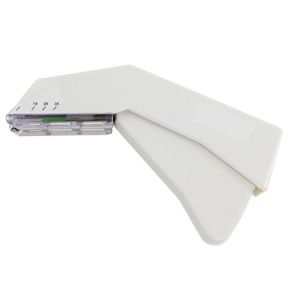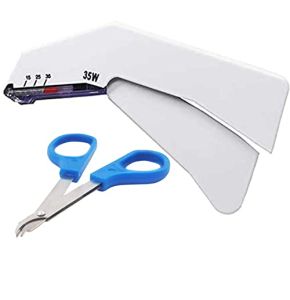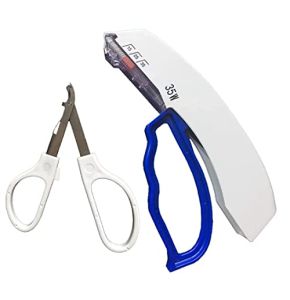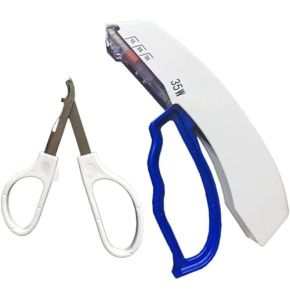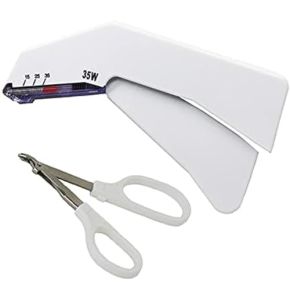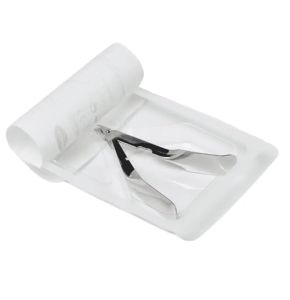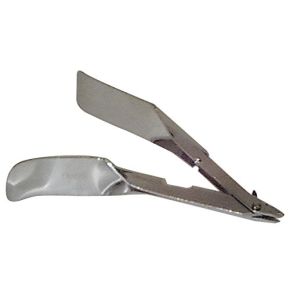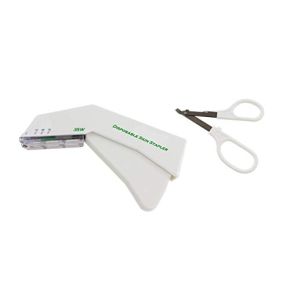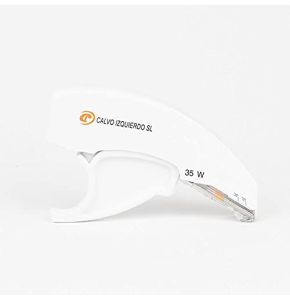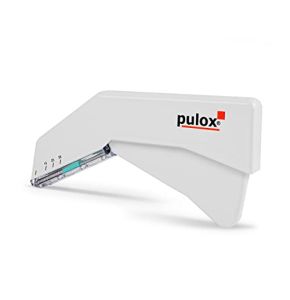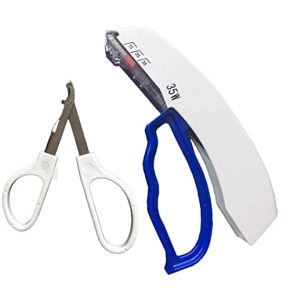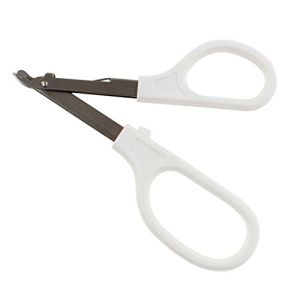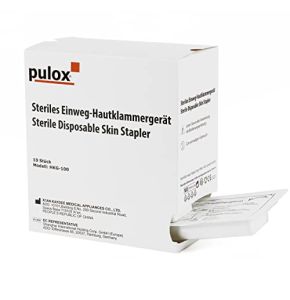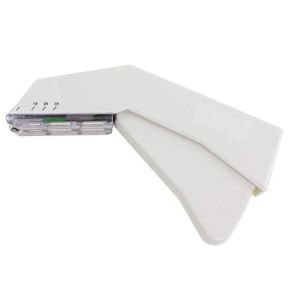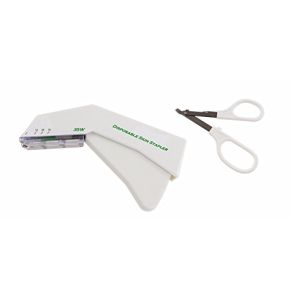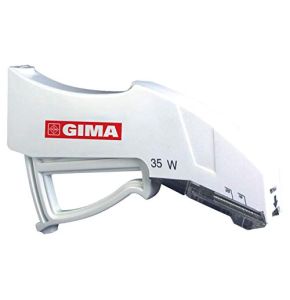Surgical stapler
18/11/2024 519
18/11/2024 570
18/11/2024 507
18/11/2024 557
18/11/2024 576
18/11/2024 504
18/11/2024 506
18/11/2024 555
18/11/2024 513
18/11/2024 481
18/11/2024 568
18/11/2024 524
Surgical Staplers: The Revolution That Simplifies Surgery
The surgical stapler has transformed the medical world by offering a quick and reliable alternative to manual sutures. This innovative tool allows for faster closure of incisions, thereby improving the efficiency of surgical interventions. By reducing the time spent in the operating room, it not only enhances patient comfort but also leads to better utilization of medical resources.
What is a surgical stapler?
A surgical stapler is a medical device used in surgery to close wounds or join tissues. It operates by inserting metal staples, thereby reducing suture time and minimizing the risk of infection. It is used in a variety of specialties, such as general surgery, cardiovascular surgery, orthopedic surgery, and bariatric surgery.
Designed for the first time in the 20th century, it has undergone several evolutions, incorporating significant improvements in safety and efficiency. Today, these tools are available in various types, including skin staplers, vascular staplers, and intestinal staplers, each specifically designed for a particular surgical application.
Whether for open or laparoscopic surgery, this instrument has revolutionized surgical practices by providing healthcare professionals with a fast and reliable method to close wounds and connect tissues.
What is a staple remover?
A staple remover is a medical device specifically designed to remove surgical staples used to close wounds and incisions after an intervention. These precise and practical tools are essential to ensure the safe and effective removal of staples, thereby minimizing the risk of injury or infection for the patient.
The staple remover is designed with a beak or tip that slides under the staple to gently lift and remove it without causing excessive pain. They are commonly used in various medical contexts, ranging from emergency rooms to general medical offices and postoperative care units.
Although the staple remover is a simple tool, its importance in the healing process cannot be overstated. It contributes to a faster and more comfortable recovery, making staple removal a less traumatic experience for the patient.
What are the advantages of using surgical staplers compared to traditional sutures?
The surgical stapler offers numerous advantages over traditional sutures. Firstly, it saves time. While manual suturing can take several minutes, this surgical instrument accomplishes closure in just a few seconds. This time-saving is crucial, especially during lengthy operations.
Secondly, it enhances efficiency. The staples are placed uniformly, ensuring consistent wound closure. This reduces the risk of leaks or postoperative bleeding. Additionally, surgical staples cause less trauma to tissues, promoting faster healing.
Finally, using this surgical instrument can improve patient outcomes. Less time under anesthesia reduces associated risks. Rapid and effective wound closure decreases the chances of infection. Patients can thus recover more quickly and with fewer complications.
What types of surgical staplers are available and for which applications?
There are several types of surgical staplers, each suited to specific applications. Here is an overview of the main models:
- Manual Staplers: The operation is performed manually by the surgeon. They are simple to use and ideal for small incisions. They are generally more affordable, making them accessible for many clinics.
- Automatic Staplers: They operate using an automatic mechanism that places staples quickly. They are used for more complex interventions, such as abdominal or thoracic surgeries. Their high precision reduces the risk of errors.
- Circular Staplers: Designed for anastomoses, they join two ends of a hollow organ, such as the intestine. They are essential in digestive surgery to restore the continuity of the digestive tract.
- Endoscopic Staplers: Used during minimally invasive surgeries, they are inserted through small incisions. They allow for internal interventions without large openings.
- Skin Staplers: Specifically designed to close skin wounds. They are often used in trauma care or emergency surgery for rapid closure of cuts.
The choice of model depends on the nature of the intervention and the surgeon's preferences. Each model offers specific advantages to meet the varied needs of surgical procedures.
How to choose the right surgical stapler for a specific procedure?
Choosing the right surgical stapler is important for the success of the intervention. Here are some criteria to consider:
- Type of Surgery: Identify whether the operation is open, laparoscopic, or endoscopic. Endoscopic staplers are necessary for minimally invasive interventions.
- Tissue to be Sutured: The density and thickness of the tissue influence the choice. For example, thick tissues require more robust staples.
- Accessibility of the Area: In hard-to-reach areas, a stapler with a pivoting head can be advantageous.
- Surgeon's Preferences: The surgeon's experience and comfort with a type of stapler can guide the choice.
- Cost and Availability: Budgets and available stocks can also influence the decision.
What are the appropriate techniques for using a surgical stapler?
Correct use of this surgical instrument requires training and attention to detail. Here is a step-by-step guide for proper use:
Preparation of the Stapler
- Sterilization: Ensure the stapler is sterile before use.
- Inspection: Check the proper functioning of the device and the sufficient presence of staples.
Positioning
- Alignment of Tissues: Properly place the tissues to be sutured to ensure precise closure.
- Placement of the Stapler: Position the stapler in a stable manner aligned with the tissues.
Activation
- Engaging the Mechanism: Gently press the handle to activate stapling.
- Visual Control: Ensure that the staples are properly placed and that the tissues are correctly closed.
Finalization
- Removing the Stapler: Gently remove the device without disturbing the staples.
- Final Inspection: Ensure there is no bleeding or improper closure.
It is important to follow the manufacturer's instructions and adhere to the institution's protocols. Adequate training is essential to master the use of the surgical device.
What are the potential risks and complications associated with the use of surgical staplers?
Although the surgical stapler offers numerous advantages, there are potential risks and complications. Here are the main ones:
- Poor Staple Placement: Can lead to improper wound closure or bleeding.
- Reactions to Staples: Some patients may have an allergic reaction to the metal in the staples.
- Infection: If the staples are not sterile or if the wound is not properly closed, an infection can occur.
- Tissue Damage: Incorrect use can damage nearby organs or blood vessels.
- Stapler Failure: Rare, but possible if the device is defective or poorly maintained.
To manage these risks, it is important to:
- Train the Staff: Ensure that all users are properly trained.
- Check the Equipment: Regularly inspect staplers for any issues.
- Follow Protocols: Adhere to sterilization and usage procedures.
- Monitor Patients: After the operation, observe for signs of complications for prompt intervention.
By adopting these best practices, the risks associated with the use of surgical staplers can be minimized.
At Placemed, we offer a complete range of high-quality surgical staplers. Whether you need a manual stapler for simple interventions or an automatic stapler for complex surgeries, you will find the equipment that suits your needs. Our products are designed to provide reliability, efficiency, and safety.
We understand the importance of high-performance medical equipment. That's why we work with the best manufacturers to provide you with surgical staplers that meet the highest standards. By choosing our products, you are choosing quality for your patients.
Don't hesitate to browse our catalog and contact our team with any questions. We are here to help you find the surgical stapler that perfectly matches your requirements. With Placemed, equip yourself with the best to ensure the success of your surgical interventions.
 Francais
Francais 
